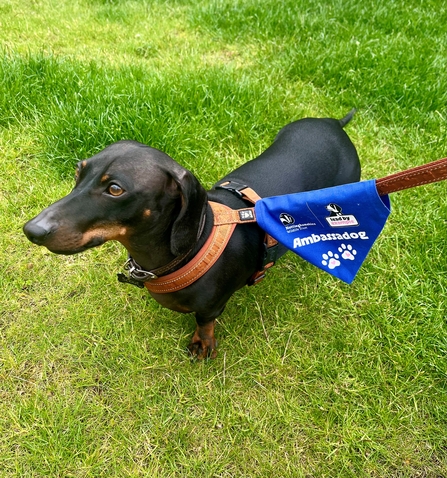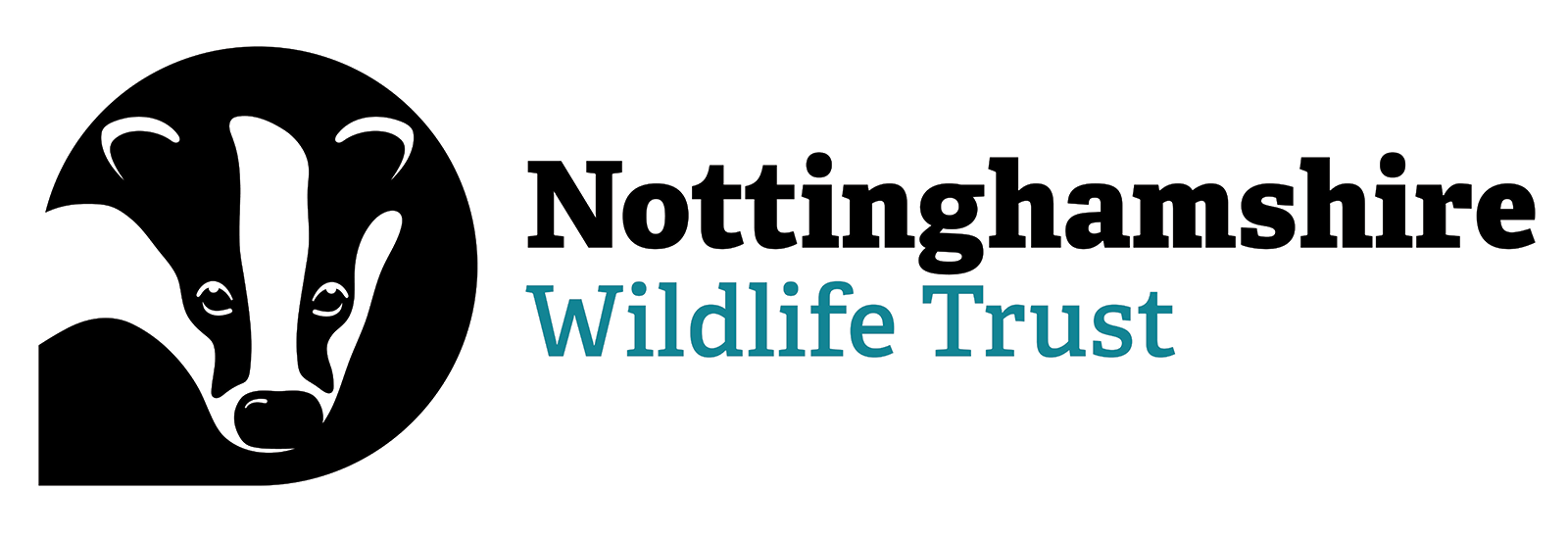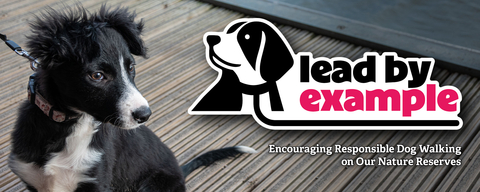
Photo © Sophie Bell
Helping People & Wildlife Thrive Together
At Nottinghamshire Wildlife Trust, we know how much people love walking their dogs at our nature reserves. We love dogs too! But as nature reserves, these spaces are first and foremost a safe haven for wildlife—including ground-nesting birds, aquatic species, and other vulnerable creatures.
Most visitors are pawsome at respecting the reserves, but sometimes small actions—like letting dogs off leads or not picking up after them—can have a big impact on wildlife and other visitors. That’s why we’re launching Lead by Example, a positive campaign to champion responsible dog walking in a friendly and supportive way.
This campaign supports Paws for Thought, a national initiative from The Wildlife Trusts and Dogs Trust, helping dog owners protect nature while enjoying the outdoors with their four-legged friends.
What is Lead by Example?
This campaign is all about encouraging and rewarding visitors (and their dogs!) who support our work to provide spaces where wildlife can thrive, free from disturbance. In our recent survey, visitors to Attenborough Nature reserve told us that they wanted to see more dogs on leads to help protect wildlife.
We’re grateful to everyone who is already Leading by Example by keeping their dog on a lead when visiting nature reserves, and we’re hoping to encourage even more dog owners to do the same. We’re looking for volunteers with dogs to help us spread the message whilst visiting Attenborough and Skylarks nature reserves – could this be you?
What will volunteers do?
-
Walk their own dog at Attenborough & Skylarks as a role model for responsible dog walking.
-
Keep their dog on a lead and pick up after them.
-
Chat with fellow dog owners in a friendly way about why responsible walking matters and rewarding those who do!
-
Wear branded gear and hand out leaflets to help spread the message.
This isn’t about telling people off—it’s about inspiring them to make better choices for wildlife!
If you and your pup would like to join the pack and help us protect nature, you can find out more and apply on our Lead by Example Volunteer pages at:
Together, we can lead the way for wildlife!
Why is Responsible Dog Walking Important?
Protects Wildlife from Stress and Disturbance – Even the most gentle and well-behaved dog is seen as a predator by wildlife. Birds, mammals, and reptiles may react with fear, using up vital energy trying to escape—even if the dog doesn’t chase them. This stress can reduce their chances of survival, especially during breeding season and harsh weather conditions.
Prevents Nest Abandonment – Ground-nesting birds like skylarks, lapwings, and nightjars lay their eggs in open spaces. If a dog runs too close, the parent birds may abandon the nest, leaving eggs or chicks vulnerable to predators or exposure.
Protects Amphibians and Reptiles – Wetland areas are home to frogs, toads, newts, and grass snakes. Dogs wading into ponds or chasing through grass can trample fragile habitats, disturb hibernating species, and even kill small creatures accidentally.
Avoids Damage to Mammal Habitats – Hedgehogs, voles, and rabbits make their homes in tall grass, under shrubs, or in burrows. Curious dogs can disturb or destroy these shelters, leaving small mammals exposed to predators or extreme weather.
Prevents the Spread of Disease Between Animals – Dogs can unknowingly spread diseases to wild animals. Canine illnesses like parvovirus, distemper, and leptospirosis can be fatal to foxes, badgers, and otters. Keeping dogs on leads and away from wildlife reduces the risk of disease transmission.
Protects Rare and Sensitive Plants – Dogs running off-path can trample wildflowers, orchids, and delicate mosses. These plants take years to establish, and once damaged, they may never recover. Keeping dogs on leads helps preserve rare plant species that make our reserves so special.
Prevents Harm to Livestock – and You! Our sites aren’t just nature reserves – they’re also home to conservation grazing livestock. Even the most well-trained dogs have a natural instinct to chase, which can cause stress, injury, or even pregnancy loss in grazing animals. Loose dogs can also startle livestock, increasing the risk of cattle charging in self-defense. This puts both dogs and their owners at risk of trampling, especially in fields with young calves. Keeping dogs on leads near livestock is essential for everyone’s safety.
Ensures a Safe Space for School Visits – Our reserves host regular educational visits for schoolchildren, helping to inspire the next generation of nature lovers. An off-lead dog running up to excited children can be frightening, especially for those unfamiliar with dogs. Even a friendly jump can knock over a small child, turning a fun learning experience into a scary one.
Dog Waste is a Health Hazard for Children – Dog poo left behind isn’t just unpleasant—it’s dangerous. It can contain toxocariasis, a parasite that can cause serious illness, particularly in young children who are more likely to come into contact with contaminated soil while exploring the reserve.
Always clean up after your dog and use the bins provided—or take it home if there isn’t one nearby.
Read our guidance for bringing your dogs to our nature reserves
A short lead means a long future for wildlife.
Together, we can enjoy nature while protecting it.
Join the Pack!
Become a Lead by Example Volunteer
Do you and your dog love walkies? Want to help protect nature while you do? We’re looking for friendly, approachable volunteers and their well-behaved pups to be part of this exciting campaign. People without dogs are welcome to buddy up with someone who does! Apply to become a Lead by Example Volunteer at one of three of our nature reserves:
Meet the team!
Meet Mondo
Please tell us about yourself and your dog, what’s their name, breed and their personality like?
I’m Katherine, I’m a glass artist who has always loved dogs and taking them for walks. My dog is called Mondo, he is a 6-month old whippet who loves everyone! He has a 5-year old ‘big brother’ called Spider.
What’s your favourite thing about walking at Skylarks Nature Reserve?
Skylarks is really quiet and you feel like you are getting away from it all.
Why do you choose to keep your dog on a lead when walking on our reserve?
Whippets are sight hounds and they are always looking out for things to chase. Keeping Mondo on a lead means I can relax and enjoy our walk knowing the wildlife is not disturbed by my over inquisitive puppy.
Could you share one tip to encourage more dog owners to lead by example?
Mondo will be wearing his ambassadog bandana so I’m hoping people might ask me about it and then I can tell them what we are promoting.
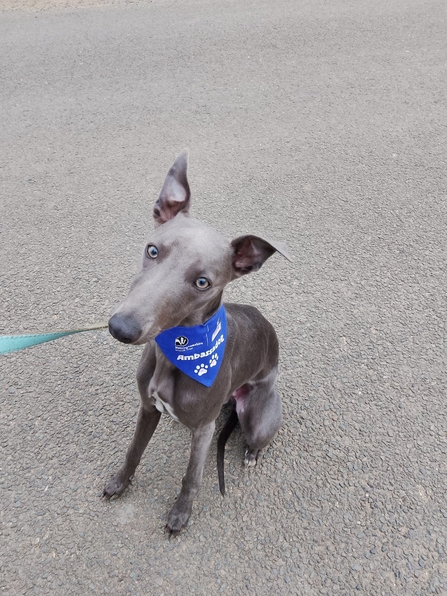
cr Katherine Wilson
Meet Emma with Ambassadog Jessie
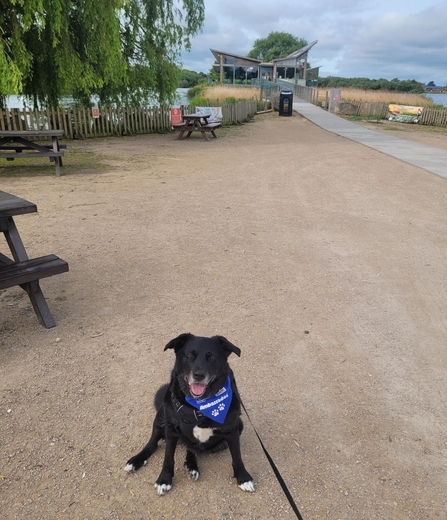
Jessie is a collie labrador cross (also knowns as a borador). She is full of energy, loves walking and playing with her toys. She would play fetch all day long if she could.
I love Attenborough nature reserve as Jessie can get scared of dogs running up to her and the on lead rules means this shouldn't happen. I also enjoy the number of walks available which vary in length and can fit around our times.
I keep Jessie on the lead at Attenborough so I know she is safe. Her recall is excellent however a dogs recall is no good if they are stuck or fixated on something else such as a bird. If she is on a lead she will not get into trouble and will always be by my side.
A tip for lead by example is to find a lead/collar combination that works for both you and your dog. Jessie will constantly pull if you attach a lead to her collar however as soon as you attach it to a harness the pulling stops and she is a lot happier.
Meet Scout
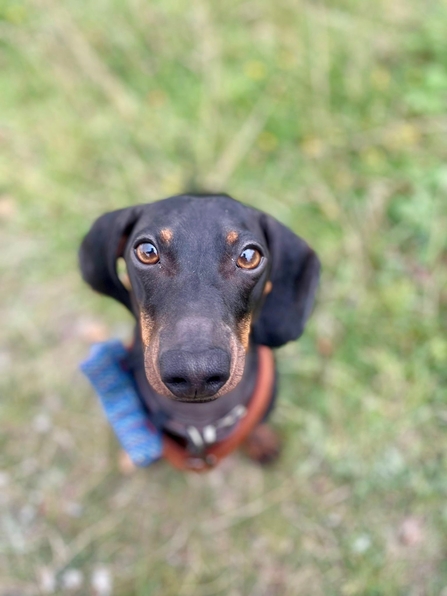
1. Please tell us about yourself and your dog, what’s their name, breed and their personality like?
Scout is a standard, smooth haired Dachshund. He can be a little nervous but is very loyal and cuddly once he gets to know you. Scout loves food, especially chicken and cheese and he hates rain. I am a project manager and I work mostly in the creative industries. I love going to gigs, drinking cocktails and enjoying meals out with my husband. We’re also very lucky to have a wide network of wonderful friends, some of whom join us on our walks at Skylarks.
2. What’s your favourite thing about walking at Skylarks Nature Reserve?
My favourite thing about Skylarks is that it’s peaceful and quiet and feels a million miles away from the city but is really only just a few minutes drive.
3. Why do you choose to keep your dog on a lead when walking on our reserve?
I choose to keep Scout on a lead when walking on the reserve as it’s the best way to enjoy a safe, and considerate walk. Scout is well trained, with excellent recall but there’s no way he could resist chasing the birds and wildlife, no matter how hard he tried! There's plenty of other places for him to run wild off lead, so we choose Skylarks for our ‘sniffy’ walks which form an important part of his routine.
4. Could you share one tip to encourage more dog owners to lead by example?
I think it’s important to remember that on lead walks can be just as interesting and stimulating for dogs as being off lead. There’s always plenty of scents for them to smell so it doesn’t need to be boring, a dogs primary sense is smell and an on lead walk is the perfect way to give their nose a work out.
